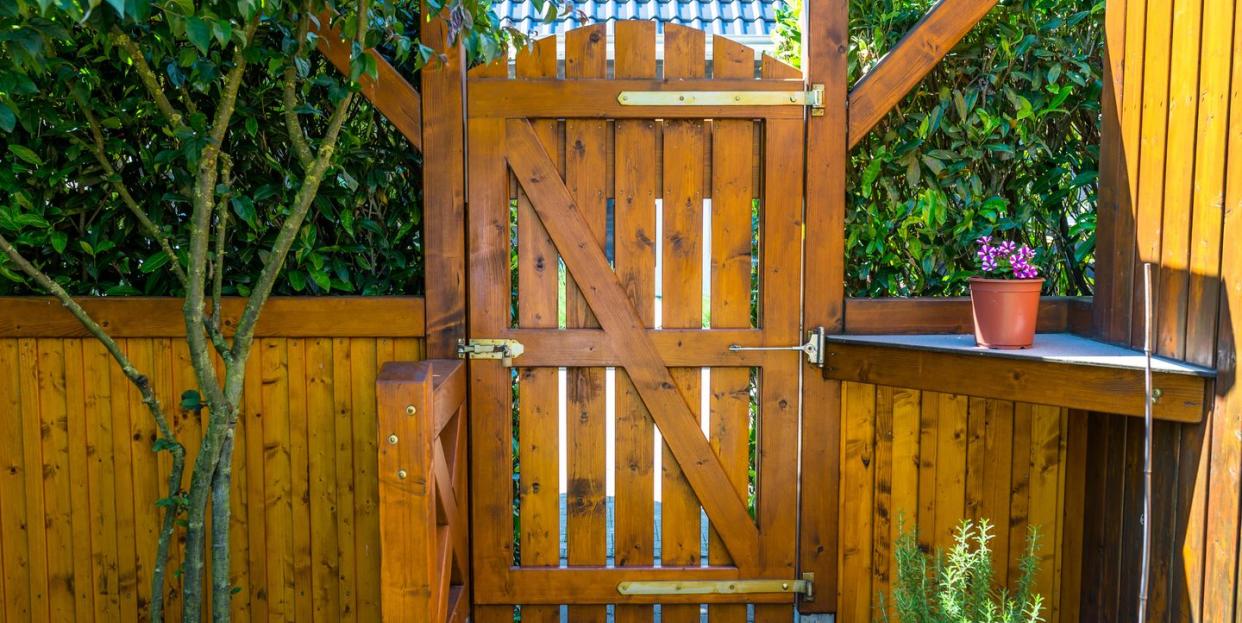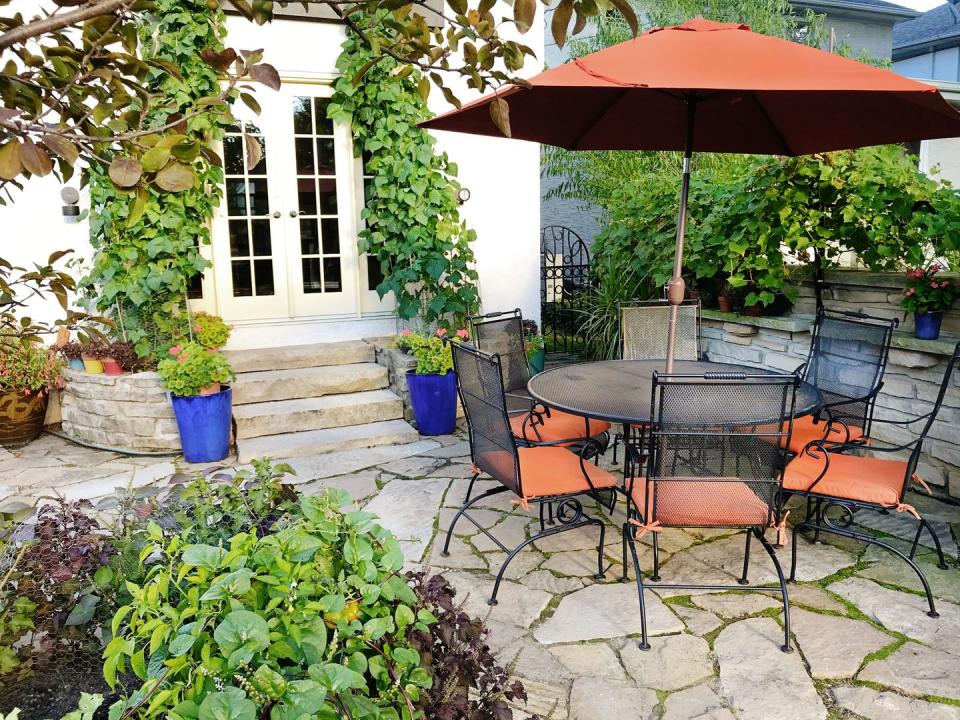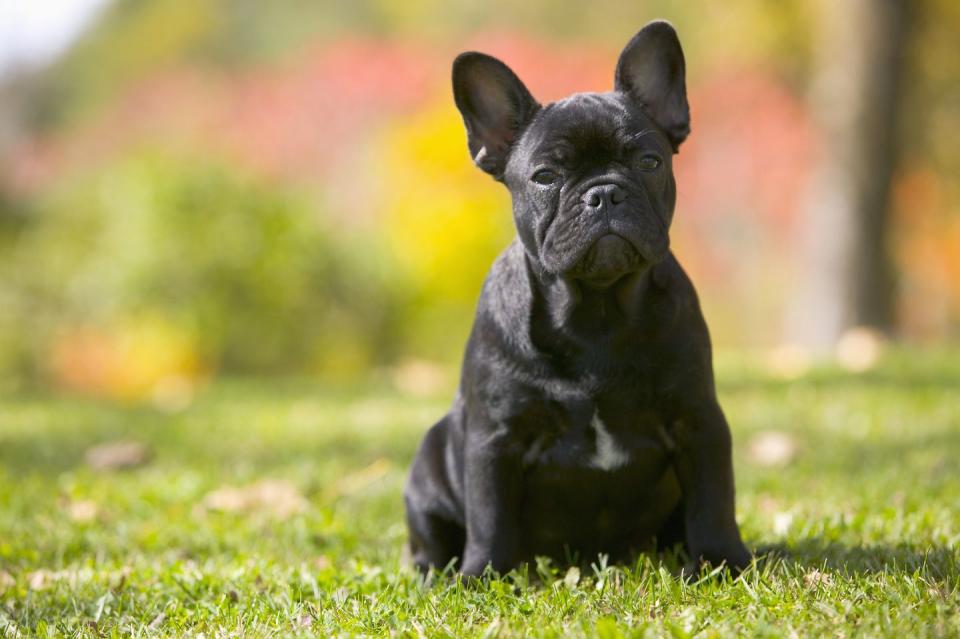10 ways to safeguard your garden against thieves and burglary

Sadly, rural crime is on the rise, including dog thefts, garden break-ins and farm robberies. Here, Sally Coulthard takes a look at these three hotspots and what we can do to help prevent them.
How to prevent garden theft
Just over half a million thefts are reported every year from British gardens. Popular targets include lawn mowers, furniture, tools, plant pots, lighting, garden gnomes, koi carp and even vegetables. So how can we prevent our gardens being burgled and deter thieves from entering them? Here are some simple measures you can take to protect your garden from theft:
Secure the boundaries of your property, particularly at the rear where it might be harder to see an intruder.
Fix a trellis at the top of a fence or grow a thorny climber. Both are good deterrents, as is a thick hedge. Read our guide on the best climbing plants for your garden here.
Keep fences and walls low in front gardens to prevent hidden corners.
Consider gravel paths, which make it hard for an intruder to approach quietly.
Install security lighting that comes on automatically.
Mark property, such as garden tools, potted plants and lawn mowers, with your postcode.
Use ground or earth anchors to secure garden furniture, containers and ornaments. Alternatively, cement or bolt them down.
Do your homework. Ensure your outdoor belongings are included on your home insurance and that your policy provides sufficient cover for their value.
Lock away high-value items, such as tools or your lawn mower, in a secure building that keeps them out of sight.
Beware repeat offenders. If you replace a stolen item, upgrade the security of where you store it. Thieves are known to return for the replacement.

How to prevent dog theft
Sales of dogs have rocketed in the past few months: on its website alone, The Kennel Club recently reported a 168% surge in searches for puppies. This, unfortunately, has inflated the price tags of our dogs and made them a target for thieves. A BBC report last year showed a significant increase in canine theft in five policing areas, with Devon, Cornwall and Northumbria experiencing the biggest rise. The good news, however, is that there are plenty of common-sense ways to keep your pet safe:
Avoid leaving your dog alone outside, even for short periods, and train them to come back when called.
Secure your garden and consider fitting a bell to a garden gate so you can hear if anyone enters.
Ensure your dog is micro-chipped. This is a legal requirement by the time they’re eight weeks old. It’s a quick and simple procedure available from your vet, or from Blue Cross centres (bluecross.org.uk) for free.
Fit a collar with up-to-date contact details, including a mobile number.
Consider neutering your dog – thieves often target dogs they can use for breeding.
Get references for potential dog- sitters or walkers and make sure you have photos of your dog from various angles, and a note of distinguishing.
Read our full guide on dog theft here.

How to prevent a farm robbery
According to a report published by NFU Mutual last year, rural crime cost the UK over £54 million in 2019, an increase of nearly 9% on the previous 12 months. Most of this rise has been driven by the theft of high-value tractors, quad bikes and other farm vehicles.
Four categories are particularly picked over when it comes to farm thefts: agricultural vehicles (tractors, diggers and transporters, for example, but also GPS systems), quads and all-terrain vehicles or ATVs, Land Rover Defenders (entire vehicles and parts) and, perhaps most upsetting, livestock.
Sheep, it seems, are being stolen and slaughtered outside of regulated abattoirs before illegally entering the food chain. Not only is this a grave risk to human health but the effects are devastating for farmers who have spent years building up breeding lines and nurturing their flocks. And, while sheep rustling was a minor issue only 10 years ago, the market for illegal meat has rocketed and farmers are regularly finding their farms emptied of 50 to 100 lambs at a time or, even worse, discovering them killed on site. Unlike many crimes, which dropped during lockdown, sheep rustling actually spiked as gangs exploited the deserted roads and worries about food shortages.

Far from being opportunistic local crimes, rural theft is big business and often the work of organised criminal gangs crossing county borders. PC Mark Atkinson, of North Yorkshire’s Rural Taskforce, sees his area “being hard hit by organised gangs coming into the region, predominantly from West Yorkshire, to steal quad bikes and horse trailers, which then have their identity changed and are sold on”. Tractors and other farm vehicles are also being stolen nationwide and then doctored to appear legitimately owned before being shipped out of the country.
How to make a stand against rural crime
Police, farmers and smallholders, however, are fighting back. As every farm is unique in both size and location, a nuanced approach to crime prevention is needed. A winning combination of community involvement, technology and security measures seems to be giving rural criminals a run for their money. On a regional level, farmers are being encouraged to engage with their local police rural crime officers, report suspicious sightings and incidents, join schemes such as Farm Watch or Rural Watch, and create social media groups with other farmers to share news.
PC Atkinson has seen, first hand, the effectiveness of North Yorkshire’s Rural Taskforce, which was set up five years ago to tackle rural and wildlife crime. “Great strides have been made in that time to engage with our local communities, assisting with crime prevention advice and targeted patrols in areas.” Police and existing rural watches are also sharing information on WhatsApp groups. “By doing this together, we can throw a larger net over an area,” he continues, “with more eyes and ears looking out for suspect vehicles and behaviour.”
Technology also has its part to play. “You can’t take what you can’t start,” explains rural affairs specialist Rebecca Davidson, and so immobilisers and trackers are absolute musts, while the CESAR registration scheme is helping to aid the recovery of stolen agricultural equipment.
CCTV linked to a mobile phone can provide farmers with extra surveillance, while ‘geo-fencing’ apps alert owners if their kit goes out of a designated area. Sheep thieves are also being thwarted by a smart new invention called TecTracer, a special paint that contains a digital code linking livestock to a particular farm. And, of course, there’s no substitute for good old-fashioned physical security.
Anti-theft devices such as steering locks and ram locks on vehicles deter thieves, while basic measures such as fitting locks to workshops and barns, using security gates and lighting and not leaving kit in sight of a public highway will all help. It’s frustrating that they’re necessary, but by taking these steps and working together, we might just prevent a cider-fuelled chancer taking someone else’s combine for a spin.
Like this article? Sign up to our newsletter to get more articles like this delivered straight to your inbox. SIGN UP
Looking for some positivity? Get Country Living magazine posted through your letterbox every month. SUBSCRIBE NOW
You Might Also Like


